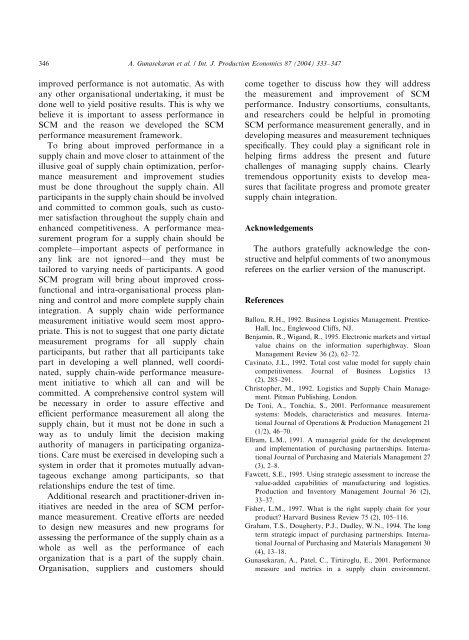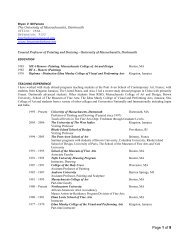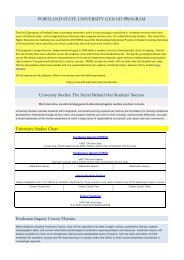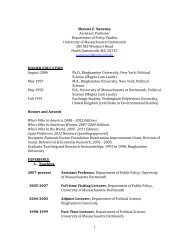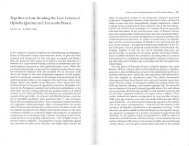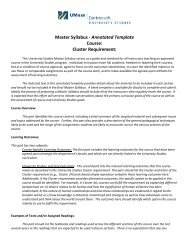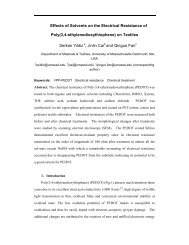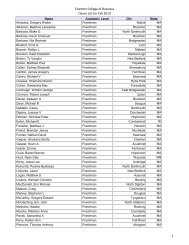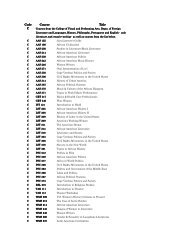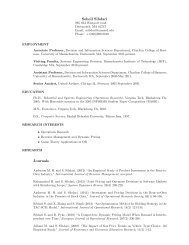A framework for supply chain performance measurement
A framework for supply chain performance measurement
A framework for supply chain performance measurement
Create successful ePaper yourself
Turn your PDF publications into a flip-book with our unique Google optimized e-Paper software.
ARTICLE IN PRESS346A. Gunasekaran et al. / Int. J. Production Economics 87 (2004) 333–347improved per<strong>for</strong>mance is not automatic. As withany other organisationalundertaking, it must bedone well to yield positive results. This is why webelieve it is important to assess per<strong>for</strong>mance inSCM and the reason we developed the SCMper<strong>for</strong>mance <strong>measurement</strong> <strong>framework</strong>.To bring about improved per<strong>for</strong>mance in a<strong>supply</strong> <strong>chain</strong> and move closer to attainment of theillusive goal of <strong>supply</strong> <strong>chain</strong> optimization, per<strong>for</strong>mance<strong>measurement</strong> and improvement studiesmust be done throughout the <strong>supply</strong> <strong>chain</strong>. Allparticipants in the <strong>supply</strong> <strong>chain</strong> should be involvedand committed to common goals, such as customersatisfaction throughout the <strong>supply</strong> <strong>chain</strong> andenhanced competitiveness. A per<strong>for</strong>mance <strong>measurement</strong>program <strong>for</strong> a <strong>supply</strong> <strong>chain</strong> should becomplete—important aspects of per<strong>for</strong>mance inany link are not ignored—and they must betailored to varying needs of participants. A goodSCM program will bring about improved crossfunctionalandintra-organisationalprocess planningand control and more complete <strong>supply</strong> <strong>chain</strong>integration. A <strong>supply</strong> <strong>chain</strong> wide per<strong>for</strong>mance<strong>measurement</strong> initiative would seem most appropriate.This is not to suggest that one party dictate<strong>measurement</strong> programs <strong>for</strong> all <strong>supply</strong> <strong>chain</strong>participants, but rather that all participants takepart in developing a well planned, well coordinated,<strong>supply</strong> <strong>chain</strong>-wide per<strong>for</strong>mance <strong>measurement</strong>initiative to which all can and will becommitted. A comprehensive controlsystem wi lbe necessary in order to assure effective andefficient per<strong>for</strong>mance <strong>measurement</strong> all along the<strong>supply</strong> <strong>chain</strong>, but it must not be done in such away as to unduly limit the decision makingauthority of managers in participating organizations.Care must be exercised in developing such asystem in order that it promotes mutually advantageousexchange among participants, so thatrelationships endure the test of time.Additionalresearch and practitioner-driven initiativesare needed in the area of SCM per<strong>for</strong>mance<strong>measurement</strong>. Creative ef<strong>for</strong>ts are neededto design new measures and new programs <strong>for</strong>assessing the per<strong>for</strong>mance of the <strong>supply</strong> <strong>chain</strong> as awhole as well as the per<strong>for</strong>mance of eachorganization that is a part of the <strong>supply</strong> <strong>chain</strong>.Organisation, suppliers and customers shouldcome together to discuss how they will addressthe <strong>measurement</strong> and improvement of SCMper<strong>for</strong>mance. Industry consortiums, consultants,and researchers could be helpful in promotingSCM per<strong>for</strong>mance <strong>measurement</strong> generally, and indeveloping measures and <strong>measurement</strong> techniquesspecifically. They could play a significant role inhelping firms address the present and futurechallenges of managing <strong>supply</strong> <strong>chain</strong>s. Clearlytremendous opportunity exists to develop measuresthat facilitate progress and promote greater<strong>supply</strong> <strong>chain</strong> integration.AcknowledgementsThe authors gratefully acknowledge the constructiveand helpful comments of two anonymousreferees on the earlier version of the manuscript.ReferencesBallou, R.H., 1992. Business Logistics Management. Prentice-Hall, Inc., Englewood Cliffs, NJ.Benjamin, R., Wigand, R., 1995. Electronic markets and virtualvalue <strong>chain</strong>s on the in<strong>for</strong>mation superhighway. SloanManagement Review 36 (2), 62–72.Cavinato, J.L., 1992. Total cost value model <strong>for</strong> <strong>supply</strong> <strong>chain</strong>competitiveness. Journalof Business Logistics 13(2), 285–291.Christopher, M., 1992. Logistics and Supply Chain Management.Pitman Publishing, London.De Toni, A., Tonchia, S., 2001. Per<strong>for</strong>mance <strong>measurement</strong>systems: Models, characteristics and measures. InternationalJournalofOperations & Production Management 21(1/2), 46–70.Ellram, L.M., 1991. A managerial guide <strong>for</strong> the developmentand implementation of purchasing partnerships. InternationalJournalofPurchasing and Materials Management 27(3), 2–8.Fawcett, S.E., 1995. Using strategic assessment to increase thevalue-added capabilities of manufacturing and logistics.Production and Inventory Management Journal36 (2),33–37.Fisher, L.M., 1997. What is the right <strong>supply</strong> <strong>chain</strong> <strong>for</strong> yourproduct? Harvard Business Review 75 (2), 105–116.Graham, T.S., Dougherty, P.J., Dudley, W.N., 1994. The longterm strategic impact of purchasing partnerships. InternationalJournalofPurchasing and Materials Management 30(4), 13–18.Gunasekaran, A., Patel, C., Tirtiroglu, E., 2001. Per<strong>for</strong>mancemeasure and metrics in a <strong>supply</strong> <strong>chain</strong> environment.


